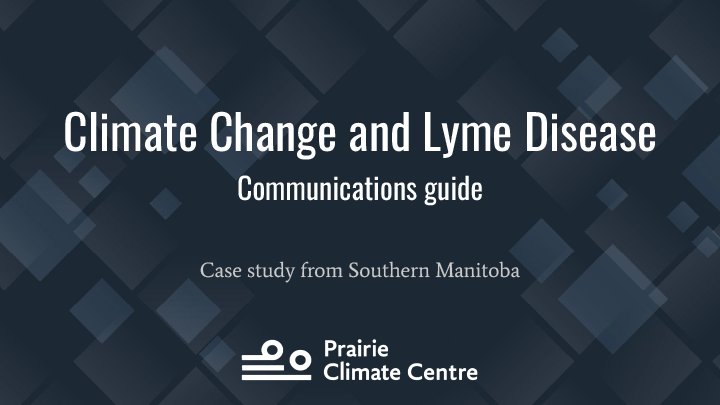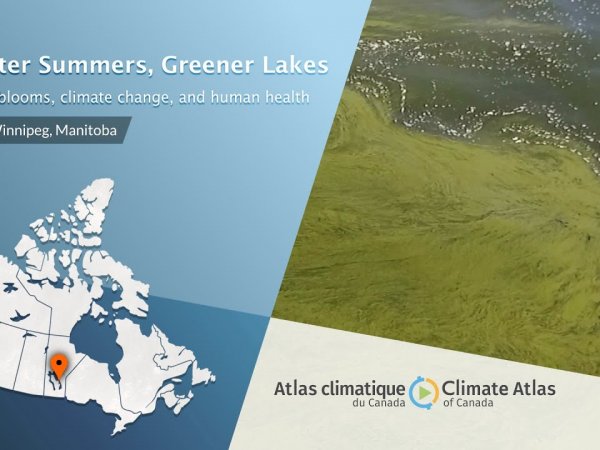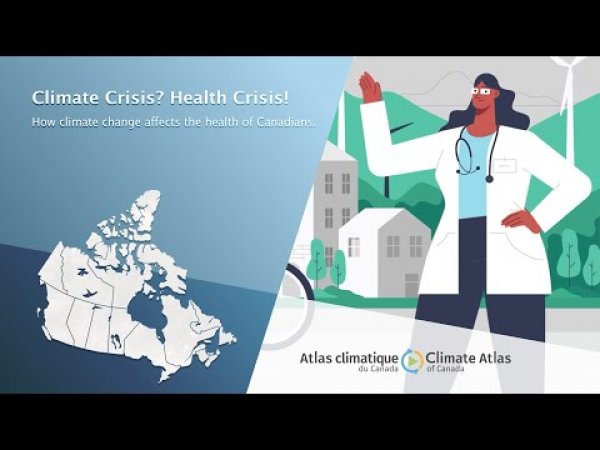![]()
Video
Hotter Summers, Greener Lakes
Algal blooms, climate change, and human health
As summers become longer and hotter under climate change, many Canadians will be seeking relief at lake beaches. But hotter summers and changing precipitation make favourable conditions for algal blooms to grow in the water, which can produce toxins that are harmful to human health. Experts, Indigenous communities, and residents in the Lake Winnipeg area are all too familiar with the impacts of algal blooms on health, as they discuss in this video
Read about
Waterborne Diseases and Climate Change
With summer temperatures starting to soar, many Canadians are eager to visit our favourite local beaches to break the heat. In many parts of the country, this means a trip to the nearest lake or river.
Climate change is impacting waterbodies across the country, with lakes in Canada warming two times faster than other lakes in the world. And with these changes come increased health risks. Higher temperatures and changing precipitation patterns make lakes more suitable for waterborne disease outbreaks. As water quality worsens under climate change, beach closures and swimming advisories are expected to become more common.
Read about
Lyme Disease Under Climate Change
When the three hottest months of the high-sun season roll around, many Canadians are used to dealing with pests - be it those pesky mosquitoes when working out in the yard or sticky ticks when walking in the forest. But in a warming world, these pests are becoming more than just a nuisance for Canadians.
Infectious diseases carried by insect vectors such as ticks are increasingly common in parts of Canada, and this increase is due in part to climate change.
Video
A Ticking Clock
Lyme disease, climate change, and public health
Lyme disease is on the rise in Canada, due in part to climate change. Warming temperatures are allowing blacklegged ticks - the species that can carry Lyme disease in central and eastern Canada - to move into new territories. Hear from the scientists, medical professionals, and citizens on the front lines of this infectious disease issue, and how we can prepare and protect our families and communities from this risk.
SPECIAL REPORT
Climate Change and Lyme Disease
Communications Guide
Despite scientific evidence that climate change has profound and far reaching implications for public health, translating this knowledge in a manner that supports citizen engagement, applied decision-making, and behavioural change can be challenging.
We developed communications materials focusing on the connection between climate change and Lyme disease, and tested them with focus group participants. Based on the results of this study, we made recommendations when communicating climate change and health across different audiences.
Download the report (PDF, 1.4MB)
Read about
Mosquito-borne Diseases and Climate Change
When you think about dangerous animals, big or poisonous creatures probably come to mind. But in fact, mosquitoes are one of the most deadly animals in the world.
That’s because mosquitoes can transmit a range of diseases which are of major public health concern globally.
Most Canadians think of these diseases carried by mosquitoes, called mosquito-borne diseases (MBD), as being limited to warm southern climates, like malaria or dengue fever. While it is true that they are far more common in the tropics, warming temperatures and increasing precipitation under climate change in Canada are expected to increase the presence of some MBD right here at home.
Video
What's the Buzz
Mosquito-borne Diseases and Climate Change
“What’s the Buzz” tells the story of Canada’s increase in mosquito-borne diseases over the last 20 years, largely due to climate change. With warmer, wetter weather in our future, experts expect these diseases will become more common. Canadians are being impacted while also responding to an increase in West Nile Virus and adapting to lessen their risk.

















.png)


